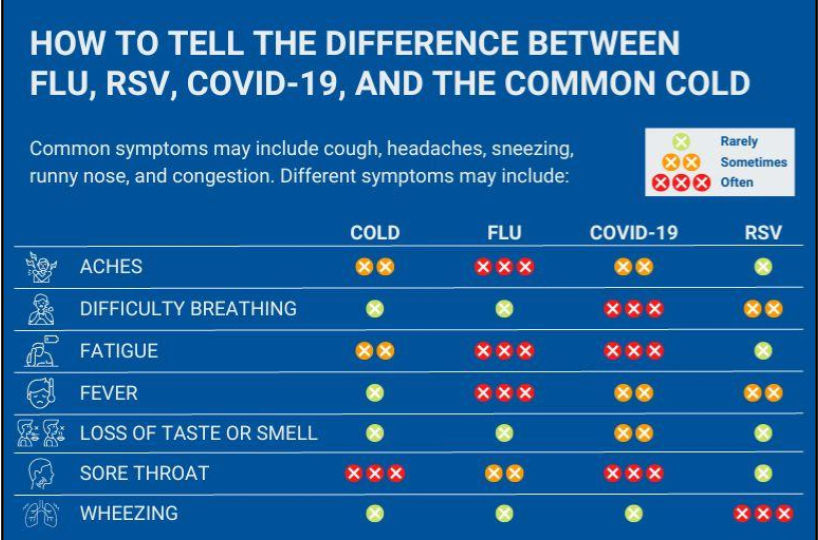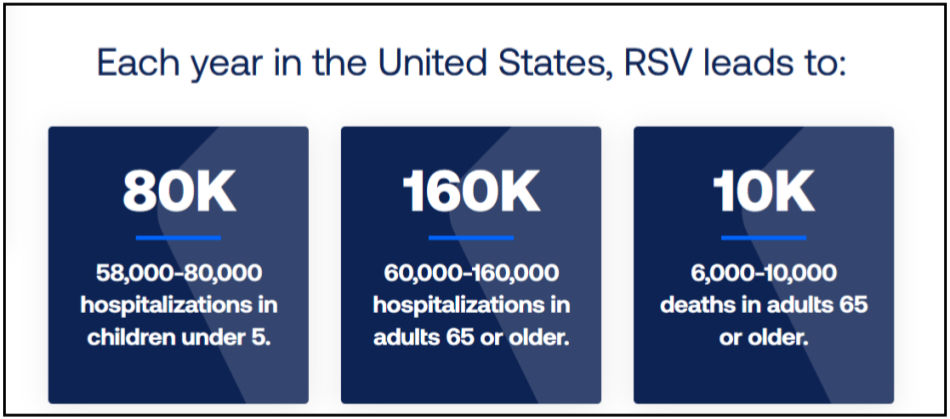‘Tis the Season: Stay Healthy During Flu & RSV Season
- Cecily Elliott

- Aug 7
- 3 min read
Fall is right around the corner, and you know what that means: pumpkin spice, cooler weather, the kids are back in school, Friday night football, and the upcoming holidays. There’s plenty of opportunities for you and your loved ones to interact with the community. Unfortunately, there’s another season also lurking right around the corner. That’s right, we’re talking about the influenza or “flu” virus and respiratory syncytial virus (RSV), two respiratory infections that have a habit of popping up in the fall and winter.
Many respiratory infections may present the same way, but there are some differences between them! Below is a chart comparing the signs and symptoms of common respiratory illnesses.

Source: National Foundation for Infectious Diseases
For many people, the flu and RSV won’t result in serious illness and can be wrangled with symptom management. However, there are many in your community that may become sicker if they catch either bug–particularly the elderly and very young children. In other words, you might be just fine if you catch either, but you could spread it to your newborn nephew or a grandparent that may not fare so well.
Thankfully, we have several ways to prevent you from catching and spreading flu or RSV this fall. First and foremost, wash your hands with soap and water or an alcohol-based hand sanitizer. When you sneeze and/or cough, cover your mouth with your elbow or a tissue if you can. If you are sick, it’s best to stay home and rest, but if you have to go out, wearing a mask can help prevent the spread. These measures are all good practices to have regardless, but your best bet would be receiving the appropriate vaccines. Excellent news, your local community pharmacy has options available to you!

Source: American Lung Association
The RSV vaccine, known as Abrysvo, is recommended by the CDC to prevent severe illness in certain people, primarily those aged 60- to 74-years old with health conditions and anyone 75-years-old or older at any time. If you have not yet received it, the end of summer is a great time to get it! It can also be given to pregnant women who are on weeks 32 to 36 of their pregnancy during RSV season (September through January) to help protect mother and baby. Unlike the flu shot, which happens yearly, the RSV shot is a one and done. If you have already received a RSV vaccine, then you do not have to get another one.

Source: American Lung Association
The flu shot isn’t available year-round, but it should be available in the fall. Fun fact, year-to-year, each flu shot is made up of different types of flu viruses. The formulation is largely based on viruses that impacted the southern hemisphere! Several sources recommend the best time to get this shot is by the end of October, but you can get it any time once it’s available. Peak flu season tends to happen around December to February, so ideally you’d get it before then. But any time is better than no time!
Additionally, these shots won’t just protect you, but also your loved ones and your community by helping to prevent the viruses from spreading. This is especially important to protect those around you who may not be able to take the vaccine. The more people who are vaccinated, the less likely flu and RSV are to impact your community.
If you have any questions or concerns, you can talk to your local pharmacist or your doctor. However, if you’re ready to take the shot, come on down and get yours when they’re available. Keep yourself and the ones you love safe and healthy this season!



Comments